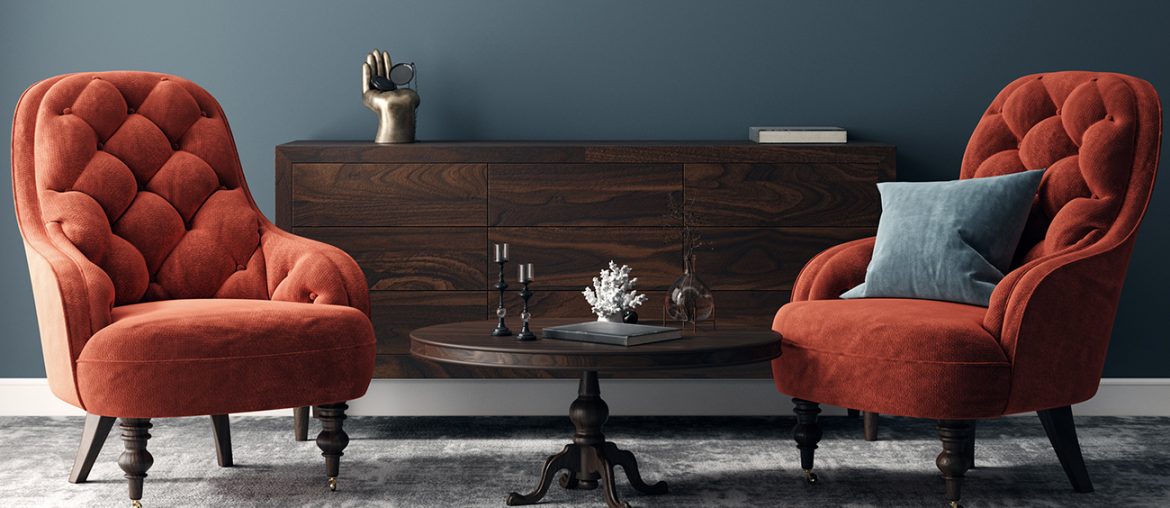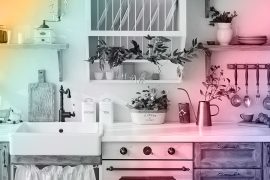#TeamPuti not your cup of tea? For those who want walls in darker hues, you’ve come to the right place (which is MyBoysen.com, of course). We’ve got pegs for whether you’re looking to create a moody space or a maaliwas one but with dark walls (yes, it’s possible!). Below are several samples to spark ideas on how you can use deep and dark paint colors in your home.
It may go without saying, that it’s best to attempt these in rooms that get a lot of sunlight. If your space gets little to none, check out this blog post: Paint Colors for Rooms With Little to No Natural Light.
Note: Wall colors featured in this article are available as Boysen paints at Boysen Mix and Match stations (list of locations here). You’ll be able to find the paint names in the caption or comments section of each post. Remember to look at the actual swatch in person as colors may look different when viewed through a screen.
Blue
Let’s start with a color that’s a little more approachable than the rest. When you want a dark hue on your walls but want to play it safe, dark blue is your best bet. Dark blue acts as a great, almost neutral, backdrop. Even homeowners only just starting to flex their design muscles can feel at ease with working with deep blue.
To prove it, designer Tom Scheerer said in the handbook House Beautiful Colors for Your Home, “It’s the easiest trick in the book—deep marine blue in high gloss with lots of white trim. You get something crisp and snappy without hardly trying.” It works great in bedrooms but you can apply it in any room in the house too.
Violet and Purple
Violets and purples are not just dainty colors. They come in deeper shades too. In these tones, they are dramatic, luxurious, and have a seemingly mysterious quality to them. This may be the color for you if you’re looking to create a truly moody space.
Add gold, brass, or yellow to the room to complement your violet or purple walls. This brings out the beauty of the hue so it becomes an accent piece all on its own. A little caution, however. Because these are moody colors, per color psychology, it’s best to utilize them in rooms where you spend time alone in a contemplative manner like a study as opposed to social areas of the house such as the kitchen, dining room, and living room.
Red
Yes, it’s true. Red is a bold choice for room walls. It’s a hue that demands attention and a stimulating one—meaning it gives you a lot of energy when you’re around it. Granted, it can get a little too much. So, if you’re considering it for large areas like your walls the key is to go deep and turn down the vibrancy so you get a more muted shade.
Deeper reds feel regal, elegant, and self-assured. And for those who are looking to make a statement, don’t worry. Reds still wow even in their more understated variations. It’s a daring choice and one you should be proud of especially when done right. Try pairing it with honey-colored woods like in the spaces above.
Dark Gray
Dark gray and black have a reputation as colors associated with all things dark and gloomy. We can’t change that but there are definitely ways to prove otherwise. Shades of gray and black can create spaces that are elegant, sophisticated, and even cozy. These hues are especially versatile as well, able to suit different rooms in the home and interior design styles.
Just like in the spaces above, you can keep things balanced by bringing in light-colored furnishings to the room. Notice how the shape of the bar chairs in the first photo and the light wood finish of the furniture in the second photo serve as points of interest. Indoor plants will stand out in a space like this too.
Have we convinced you to dive into the depths of the deep? Come to the dark side. We’ve got great taste in interiors! Find more design tips for dark rooms here: 10 Styling Tips When Using Dark Paint Colors.
If you have questions about any of the Boysen products or painting in general, we will be happy to assist you. Send an email to ask@myboysen.com or call (02) 8363-9738 local 413 to 418 during office hours for a one-on-one consultation.




